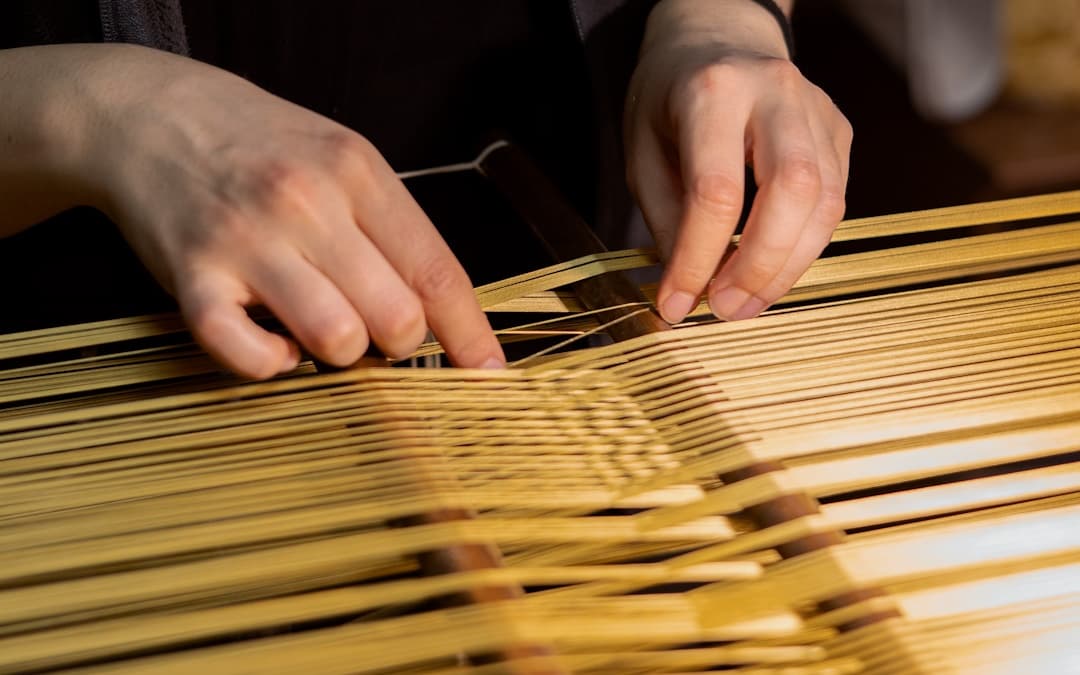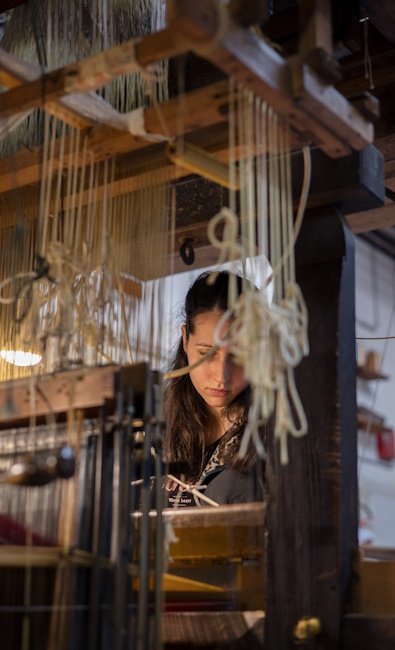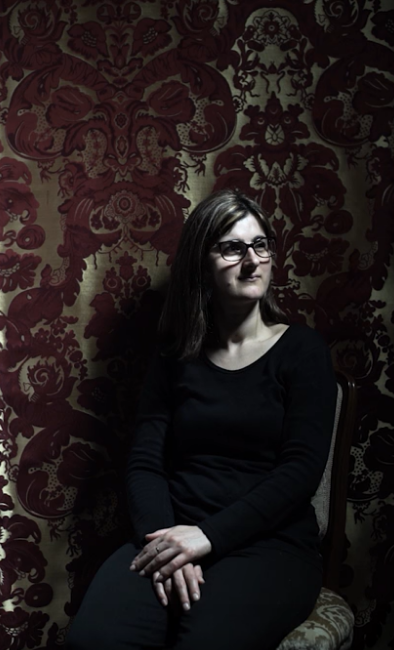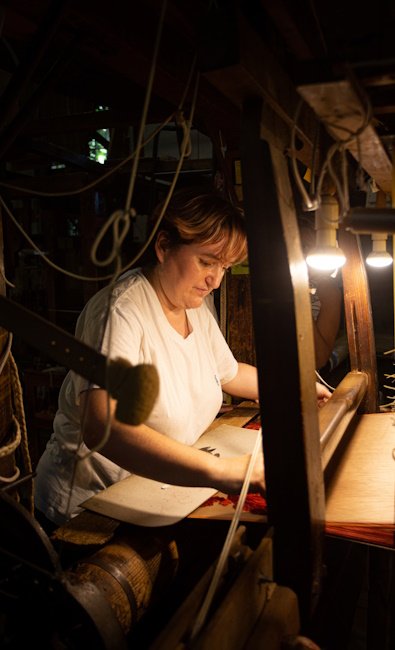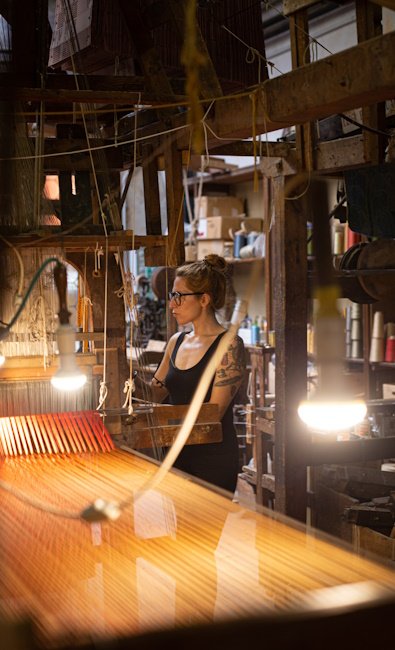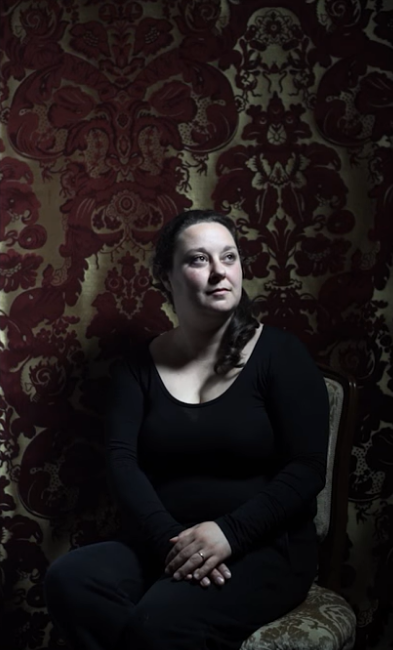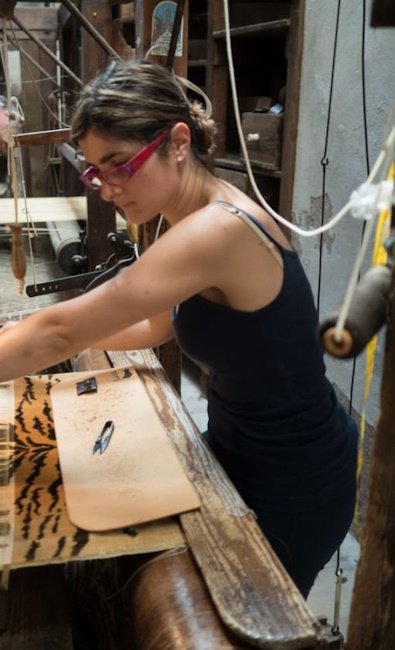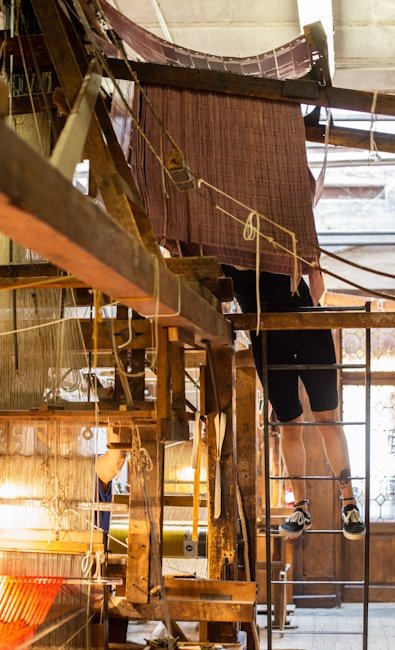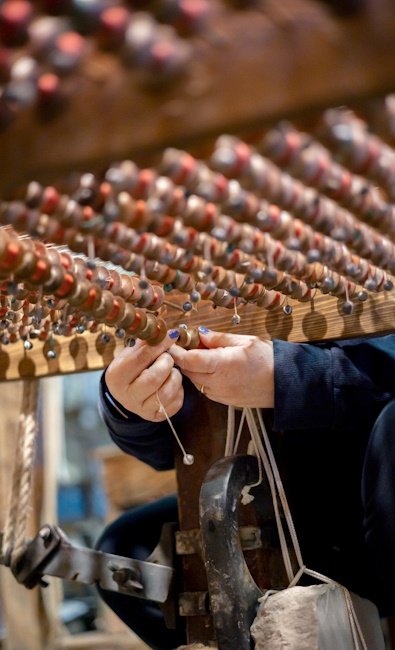Today, seven weavers work in the atelier of the Luigi Bevilacqua Tessitura at 1320 Venezia Santa Croce. They are the artisans who preserve the know-how to make our fabrics on the 18 original 18th-century looms that we recovered in 1875 from the Serenissima School of Silk. Their names are Silvia, Ilaria, Carlotta, Giulia, Giulia, Chiara e Gloria. Three of them tell us about their experience and curiosities about the world of handmade velvets and artisanal weaving.
Handweaving Velvets on Old Looms: Difficulties and Value
The peculiarities of working with a handmade weaving loom, Gloria explains, can already be seen during its set up. This stage, in fact, takes a long time: on average one to two months, but it can reach up to six months for the most complex velvets.
In addition, artisanal weaving also needs a very long time for production. Behind these luxurious and unique fabrics is the hand of a human being: some days she is stronger, and can get maybe 40 cm of fabric, in 8 hours. On other days, she has less strength, and so the centimeters produced will be less. A lot of precision is also required, to draw out the iron bars that create the velvet pile and cut the fabric pile with the special blade. This is physical labor that requires some force to press the loom pedals and thus move the perforated tabs in the Jacquard machine and the warp and weft threads.
“None of these are operations you can do lightly,” Gloria relates. “No matter how careful we are, we are not machines and small imperfections can show up on the fabrics. It’s not clear to everyone, but the value of these handmade fabrics also lies in these imperfections, a sign that the piece is unique and truly handcrafted.”
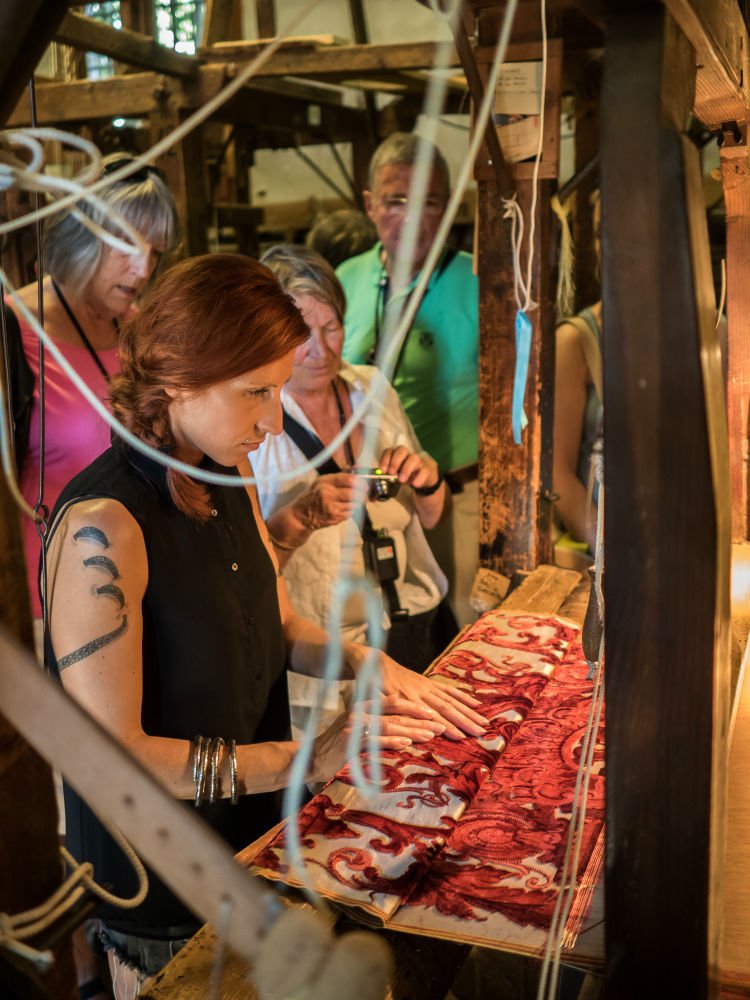
The weaver Gloria
Bevilacqua’s Training of Upholstery Fabric Manufacturers
In the 19th century, the path to becoming a weaver was very long, lasting about 4-5 years and starting very early, at age 9 or 10. Today, the training has remained the same, although a bit more focused, reducing it to two years, and is still based on two basic steps: observing an experienced weaver and perfectly understanding how looms work before weaving any velvet.
Only after this period can a weaver begin to work on a velvet by herself.
“I studied at the Textile Art Institute, and it was here that I heard about the Bevilacqua weaving mill. So, when I finished my studies, I sent in my resume and had a stroke of luck, because at that time they were looking for new weavers,” Silvia says.
This is just the beginning, however, says Ilaria: “When you get here, you need new theoretical and practical training. These looms can’t be found in any school, of course, so I learnt the craft here, little by little. Only by observing it for years can you understand how the loom is made, how the threads go through it, how to fix them when they break, and what the different types of knots are.”
Training the new weavers at Bevilacqua are the older craftswomen-Silvia and the other five who work here today received it from those who are now retired. “And we will do the same: we will pass on the knowledge to those who will come in the next few years.”
Through this training and daily experience, they can discover, for example, the value of humidity: if the environment is too dry, there is a lack of friction that keeps the wires twisted on the reels. That is why in summer, when there is not enough humidity, weavers pour water under the cantra, the tool that holds all the reels.
The weavers at Bevilacqua – Image Gallery
Working on Handlooms
It must be considered that the handlooms in our Tessitura are old machines and can break easily. When this happens, it is the weavers who have to identify where the problem is. But how can they tell if something is wrong? “By listening to the loom. If you notice, there is no music in the loom room: it would prevent us from hearing the sounds produced by the loom,” Gloria says.
Any abnormal sound puts the weaver on alert and action must be taken immediately so as not to ruin the fabric. “Sight is not everything for a weaver, who must first be able to hear the loom and know its sounds perfectly.”
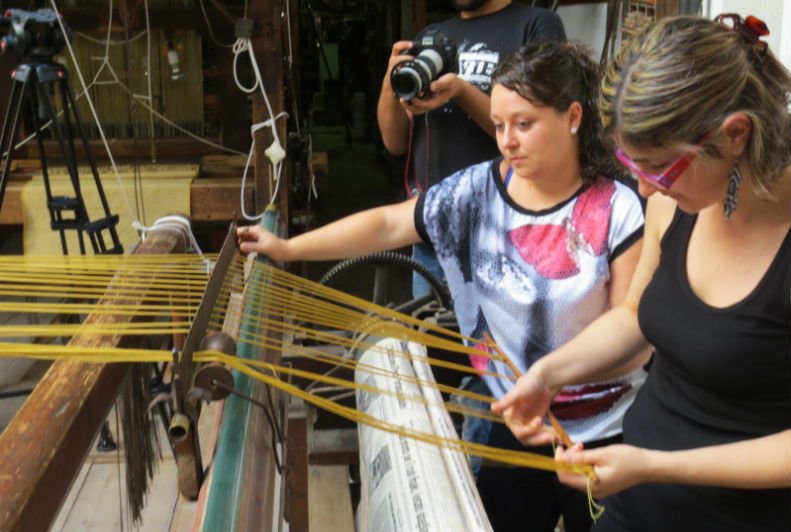
The weavers, Silvia and Ilaria
The Secret to Keeping a Tradition Alive
Is it a complex job? Yes, but every weaver knows that she has created, with her own hands, an unparalleled piece. “There is no doubt that it is hard and demanding work. But knowing that you are producing something absolutely unique, with ancient techniques and tools that virtually no one else has, is indescribably satisfying.”
So, this centuries-old tradition can survive thanks to the skill and passion of the artisans who carry it on and know the importance of passing it on by sharing it with others.
Listen to Silvia and Ilaria’s story in the video made by Ampersand Video in collaboration with the Venetian Civic Museums and the Venice Academy of Fine Arts.
Photos by Camilla Glorioso and Marta Formentello

